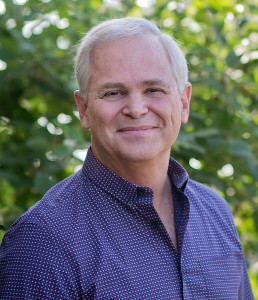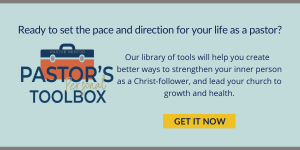
What’s a guy to do when a family member, friend, or church member asks what you would like for Christmas or your birthday? You may not want to give them a look at what’s really on your wish list.
Gift cards, then? Cold cash? Maybe.
Here’s the million dollar answer: a book, please!
Leaders are readers, after all. And if you’re feeling guilty about how your reading goals went last year, then now is the perfect time for a restart.
Why Bother with Reading Books?
It’s tempting not to bother with books when you have Google and Siri in your pocket, Alexa on your kitchen counter, and blog posts filling up your inbox.
But books still deserve a place in your life.
Oscar Wilde once said,
“It’s what you read when you don’t have to that determines what you will be when you can’t help it.”
You were forced to read in college and grad school. How has your expertise, and your library, grown since your required reading ended?
There is a level of quality in a book that you don’t always find on the internet. Books from publishing houses are vetted and edited and sweated over; and they are a thorough take on whatever the topic. The author gave you his all in those pages.
So yes, there is value in being a church leader who reads books, but that doesn’t mean you can’t read fast.
How to Approach a Book
When you first open the book, you are not sitting down to read every word. Mortimer Adler in his classic, How to Read a Book, calls it “elementary reading” when you put your eyes on every word. That’s how a third grader reads.
1. Think about what you want to get from this book.
Use the endpapers at the front of the book or open a note in Evernote and write down why you are reading the book – the problem you need to solve, or what you want to learn.
2. Scan before you read.
Take ten minutes to read the front cover, the back cover, the publication info, and the table of contents. Get a feel for the author’s background and perspective, and the scope of the book.
Then spend thirty minutes looking over the chapters. Flip through to look at charts, tables, and illustrations; glance at the headings and read the call out boxes. Pause to read the first or last pages in chapters that interest you. Then, skim the index.
3. Read the introduction and the first chapter.
Now that you are clear on what you are looking for and what the book has to offer, take some time to read the introduction and the first chapter.
Write down any questions or observations that come to mind. Asking questions will help you think critically as you read.
Then read the summary and conclusion at the end of the book. Add anything important or memorable to your notes about the book.
4. Only read as much of it as you want.
 Mind blown. All those books you never finished? They aren’t silent witnesses of your shortcomings; they are testimonies of your efficiency.
Mind blown. All those books you never finished? They aren’t silent witnesses of your shortcomings; they are testimonies of your efficiency.
After you read the introduction and first chapter, you can keep reading straight through the book or skip to the chapters that interest you.
Stop when you get what you need. You can always go back to the book later if it can help you again.
Now you know how to be a faster reader. Keep going to see how to be a better reader.
How to be a Leader who Reads in the Digital Age
Here are eight tips that will help you read efficiently and effectively.
1. Choose wisely.
Every book you read means that you aren’t reading another book. How do you know what to choose?
If you are a pastor, or church leader, then read about ministry, the church, or leadership. Or prayer, or worship, or evangelism. I’ll give you a short list of my recommendations in the download.
Read a biography every now and then. And read some fiction: a national best-seller, historical fiction, or a classic.
2. Digital or print?
I’ve found I can’t study and digest a book on a screen because it’s hard to flip around to get a sense of the whole book.
I love digital for ebooks and fiction, but if I want to study a non-fiction book, then I need a print version.
Weigh the pros and cons of digital and print for different genres, and choose what works for you.
3. Set a reading goal.
How many books did you read last year? How many books would you like to read this year? Now prayerfully, pick a number in the middle. Make it an achievable stretch. Include it in your goals for the coming year.
4. Plan ahead.
 Know which book you’re reading next. As an act of self-control, though, don’t start the next book until you are done with the current book.
Know which book you’re reading next. As an act of self-control, though, don’t start the next book until you are done with the current book.
5. Read every day.
Set a page goal – 10 or 20 pages a day. Block out the time on your calendar. And keep your book with you so you can redeem empty moments in your day.
Brian Tracy says that one hour per day of study will put you at the top of your field within three years.
6. Read with a highlighter and a pen in your hand.
Highlight what you want to remember. Use the pen to write notes in the margin or add to your notes at the beginning.
If you like to mind map, then draw a mind map of what you learn. It always helps to put everything on one piece of paper.
7. Apply what you learn.
Use Evernote or the endpapers of the book to list the most important concepts and your action items. Move your action items to you to-do list.
Tell somebody about what you learned.
8. Keep a list of the books you’ve read.
If you’ve scanned, skimmed, digested and applied, it counts as being read. It’s not about putting your eyes on every word.
You can read better and faster. Then lead better and faster.
Now What?
We have a tool that will capture these strategies and help you work out how they apply in your situation. You can find it in the Pastor’s Personal Toolbox. It’s a library of our best tools and resources — all in one place. Tap below to learn all about it, and get the cheat sheet that will help you apply the 12 principles to easily become a leader who is an effective reader.
 Hal Seed is the founding and Lead Pastor of New Song Community Church in Oceanside, CA. He mentors pastors who want to lead healthy, growing churches with resources at www.pastormentor.com.
Hal Seed is the founding and Lead Pastor of New Song Community Church in Oceanside, CA. He mentors pastors who want to lead healthy, growing churches with resources at www.pastormentor.com.
Start Here to learn more about the resources available for you at PastorMentor.

Leave a Reply